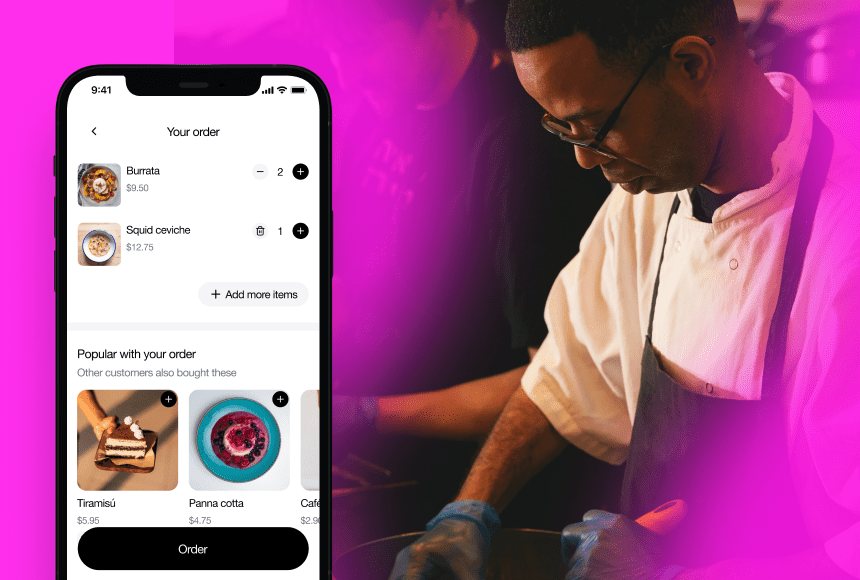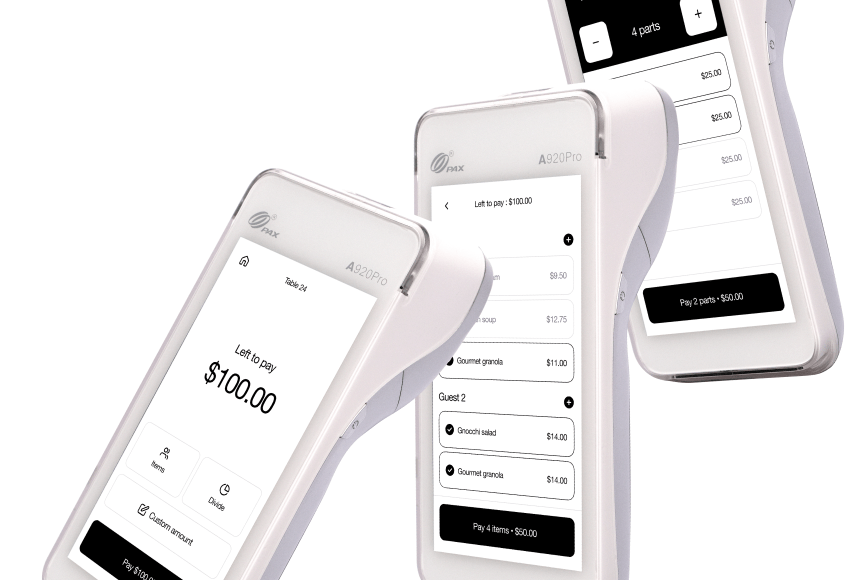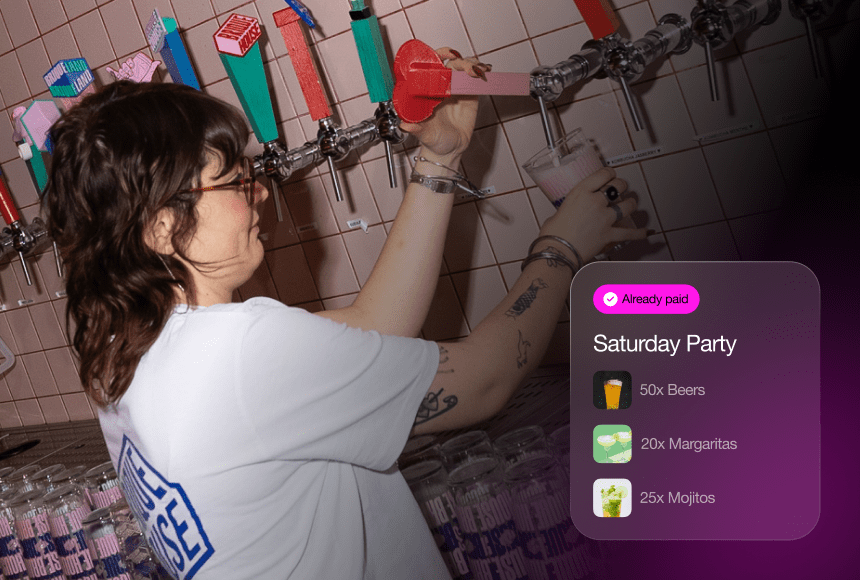
Five Proven Ways to Boost Table-Side Sales in Your Restaurant
Why At-Table Ordering Is More Than a Gimmick
Have you ever noticed the difference in mood when guests take control of their dining experience? Think about it: a party walks into your restaurant, sits down, and can instantly start browsing your menu on their phone, tapping into specials and combos without waiting for a server to arrive. That’s the power of at-table ordering.
Yes, the technology looks sleek. But the real magic goes beyond shiny devices or QR codes. By letting diners order right from their seat, you streamline service, save staff resources, and encourage bigger orders. It all translates into higher average checks.
If you’re aiming to elevate your restaurant’s revenue without overhauling your entire concept, at-table ordering can be your best ally. Below, you’ll find five best practices—from boosting menu visibility to using subtle upselling—that help you get the most out of table-side ordering. Let’s dive in and see how you can empower guests, optimize staff workflows, and ultimately increase those all-important ticket sizes.
1. Showcase Your Menu with Engaging Visuals
A standard typed menu can convey the essentials: dish name, short description, price. But your guests can only guess at how mouthwatering that molten chocolate cake looks or how fresh the local produce on your new salad tastes. You want them to see it—feel it—even before they place an order.
That’s where at-table ordering platforms really shine. Digital menus allow you to use vibrant images and detailed descriptors that a simple paper menu can’t match. Research from the Restaurant Dive feature on menu photography suggests that high-quality photos can boost sales of a particular dish by up to 30%.
- Highlight Signature Dishes: Add large, appetizing images of your most profitable or popular items. Let the photos speak for themselves.
- Use Mouthwatering Descriptions: Keep them concise but descriptive, focusing on textures, flavors, and key ingredients. Phrases like “slow-braised,” “farm-fresh,” or “tangy glaze” can do wonders.
- Promote Specials and Seasonal Items: Because digital menus update easily, you can swap in new dishes or highlight seasonal favorites with minimal effort.
When diners can quickly tap an image for more details, they’re likely to feel more confident—and more adventurous—in their choices. That often translates into higher-priced entrées, add-ons, and even desserts they might have otherwise skipped.
2. Offer Smart Pairings and Upsells
If you’ve ever had a server recommend just the right wine to accompany a steak, you know how powerful a well-timed suggestion can be. At-table ordering solutions let you automate these pairings. Rather than relying solely on servers who might be juggling multiple tables, you can let your menu itself prompt diners in a thoughtful way.
Imagine a guest clicks on your top-selling burger. Right there, the system nudges them: “Would you like to add sweet potato fries for $2 more?” or “Try our seasonal craft beer that pairs perfectly with grilled meats.”
To leverage smart upsells:
- Create Logical Bundles: Offer a discounted bundle of an appetizer, main course, and dessert. When customers see they’re getting a deal, they’re more inclined to spend a little extra.
- Recommend Drinks: Drinks are often high-margin items. If your platform can auto-suggest wine, cocktails, or even specialty coffees, you’ll boost revenue with minimal extra work.
- Use Tiered Suggestions: If a diner is about to purchase a simple salad, have the system highlight premium add-ons like grilled shrimp or avocado. A small $3–$5 boost per order can add up quickly over the night.
These pairing prompts keep your staff from having to remember every single upsell opportunity—and free them to focus on hospitality. Meanwhile, your guests see relevant suggestions at just the right moment in their decision process.
3. Make the Ordering Process Effortless
Ever fumbled with a complicated kiosk or a clumsy online checkout form? It kills the mood. The faster and smoother your guests can navigate your at-table ordering, the more likely they are to explore additional options, check out side dishes, and maybe even top off with dessert.
Focus on:
- One-Click Additions: If you can streamline actions (like “Add to Cart” or “Add Toppings”) into a single tap, you remove friction from the buying journey.
- Clear, Simple Interface: Group similar dishes together, label vegan or gluten-free options clearly, and ensure the text is easy to read on a phone. Avoid clutter.
- Visibility of Important Info: Provide quick details on allergens, portion size, or spice level. When guests don’t have to search or ask, they gain confidence—and often spend more.
Let the technology do the heavy lifting. That means minimal frustration for your customers and a higher likelihood they’ll enjoy browsing and ordering extra items.
And don’t forget: a solution like sunday doesn’t just handle the ordering phase, but also payment, tips, and (optional) reviews. By integrating these stages, you reduce wait times and give guests the freedom to keep adding items—like a second drink or a last-minute dessert—right until they finalize their bill.
4. Make Dessert Hard to Resist
Let’s talk about dessert. Diners often skip that sweet ending when they’re full or when they’re tired of waiting for the server to circle back. But if a tempting dessert menu appears on their screen—complete with mouthwatering photos—right when they finish their main course, how many will say no?
With at-table ordering, you have the power to time your dessert or add-on suggestions perfectly. A quick pop-up might appear the moment a guest indicates they’ve finished their entrée. Or you could design your menu flow so that once they remove their main dish from the “cart,” the dessert section automatically lights up with special prompts.
- Use Limited-Time Appeals: “Only available tonight!” or “Seasonal berries—get them before they’re gone!” triggers a sense of urgency.
- Mini Desserts & Samplers: Some guests hesitate to order a full slice of cake. Offer smaller tasting portions or trio samplers that feel less indulgent but still enhance the overall check.
- Fun Flavor Combos: Pair dessert with a dessert wine, a specialty coffee, or even a curated flight of liquors. The synergy often piques curiosity enough to push that final sale.
Remember, the more visually appealing and accessible those sweet treats are, the higher the chance your guests will spring for them. And even small dessert orders, consistently upsold, can significantly raise your average check.
5. Use Data to Refine Your Menu and Pricing
A hidden benefit of at-table ordering systems is the data they generate. Rather than guesswork—like “I think the salmon did well tonight”—you can access precise figures on which items were viewed most, added to carts, and ultimately purchased. That kind of insight gives you a powerful advantage when adjusting your offerings and pricing.
Consider how you can harness data:
- Identify Top Performers: If your spiciest wings are the best-selling appetizer on Friday nights, highlight them more prominently. Alternatively, if a certain dish lags behind in conversions, consider a new photo or a price tweak.
- Test Pricing Sensitivity: Maybe you suspect you can raise the price of your signature steak by $1 without deterring guests. Keep an eye on the add-to-cart rate before and after the change.
- Pinpoint Missed Opportunities: If customers frequently view a dish but rarely complete that order, investigate. Could the item lack a good photo? Is the description missing key details? Are they turned off by the final price?
When you continually refine your digital menu based on real customer behavior, you evolve toward a layout and pricing structure that naturally nudges your average check upwards.
Creating a Holistic Guest Experience
Implementing these best practices isn’t just about boosting your bottom line—it’s about crafting a better experience for your diners. People enjoy feeling in control: the power to order when they’re ready, adjust an appetizer here, or add an extra topping there. At-table ordering gives them that sense of agency while keeping your operations efficient.
Imagine a busy Friday night where the line outside is growing. Meanwhile, your current guests are happily ordering their next round of drinks through a simple tap, without needing to flag down a busy server. This positive loop—guests satisfied by frictionless service, staff freed up to focus on warm hospitality—creates a vibe that makes people want to return.
Bonus Tips for Success
If you want to go the extra mile, here are a few bonus suggestions:
- Run Time-Limited Promotions: A special “happy hour” discount on appetizers or cocktails can spur impulse orders. Highlight it prominently in your digital menu.
- Encourage Social Sharing: Incorporate a gentle prompt after a successful order: “Share your meal on Instagram and tag us!” The more buzz you generate, the more potential new diners walk through your door.
- Train Your Staff to Guide Reluctant Guests: Not everyone is tech-savvy. Make sure servers can quickly show diners how to scan the QR code or place an order. A friendly nudge can convert skeptics into enthusiasts.
- Leverage Feedback Tools: Some solutions let customers leave quick ratings or comments at the end. You get real-time feedback to keep improving your offerings and service.
These small touches can complement your overall strategy of driving up check sizes and ensuring a pleasant guest experience.
The Role of sunday in At-Table Ordering
You might be wondering how to implement these best practices without juggling multiple software platforms. This is where sunday fits perfectly. sunday is more than just a way to pay—diners can view digital menus, place orders, and close their tab all through their smartphone.
Because it seamlessly integrates ordering and payment, you can:
- Invite Real-Time Menu Updates: You can push new specials or promotions on the fly.
- Streamline Upsells: Suggest relevant add-ons or pairings the moment a guest selects a dish.
- Collect Feedback Effortlessly: Right after they pay, guests can rate their experience or leave a quick Google review if they wish.
All these features lighten your staff’s load and ensure your customers have the modern, frictionless experience they’ve come to expect.
Where Do You Go from Here?
If you haven’t embraced at-table ordering, consider starting small. Maybe test it during quieter shifts, gather feedback, and adjust your digital menu layout. Train your staff so they’re comfortable guiding guests through the process. Show them how easy it is to add recommended extras and drinks with a single tap.
If you already offer at-table ordering, revisit your approach to visuals, upsells, and menu design. Look at how many customers actually browse beyond the main dishes. Are you missing an opportunity by not showcasing your decadent desserts or signature cocktails? Could you adjust your combos to nudge customers toward a slightly higher check?
Either way, each tweak you make can lead to a noticeable jump in average ticket sizes. And, often, these improvements also raise customer satisfaction by removing little hassles from the dining experience.
Conclusion: A Win-Win for Your Bottom Line and Your Guests
At-table ordering isn’t about removing the personal touch of a good server—it’s about enhancing it. By freeing your staff from constantly running to input orders or fetch menus, you let them focus on what truly matters: sharing recommendations, engaging with customers, and keeping the atmosphere lively. Meanwhile, guests get the convenience of browsing a digital menu, customizing their meal, and paying on their own terms.
Following the five best practices outlined above—visual storytelling, smart pairings, a frictionless interface, irresistible dessert prompts, and data-driven insights—will help you capture higher check averages without resorting to pushy tactics. When executed well, these steps heighten the dining experience and boost your restaurant’s financial health at the same time.
In an era where people crave both speed and personalization, at-table ordering stands out as a powerful strategy. It offers a modern solution that’s surprisingly easy to adopt—and once it’s woven into your daily operations, you’ll likely wonder how you ever managed without it. So go ahead: spotlight those tempting photos, fine-tune those upsell prompts, and let your customers explore your menu with a simple tap. You’ll see the difference in your revenues—and in the satisfied smiles across your dining room.
Find out more today
Drop us your details below and we’ll reach out within the next 24h



